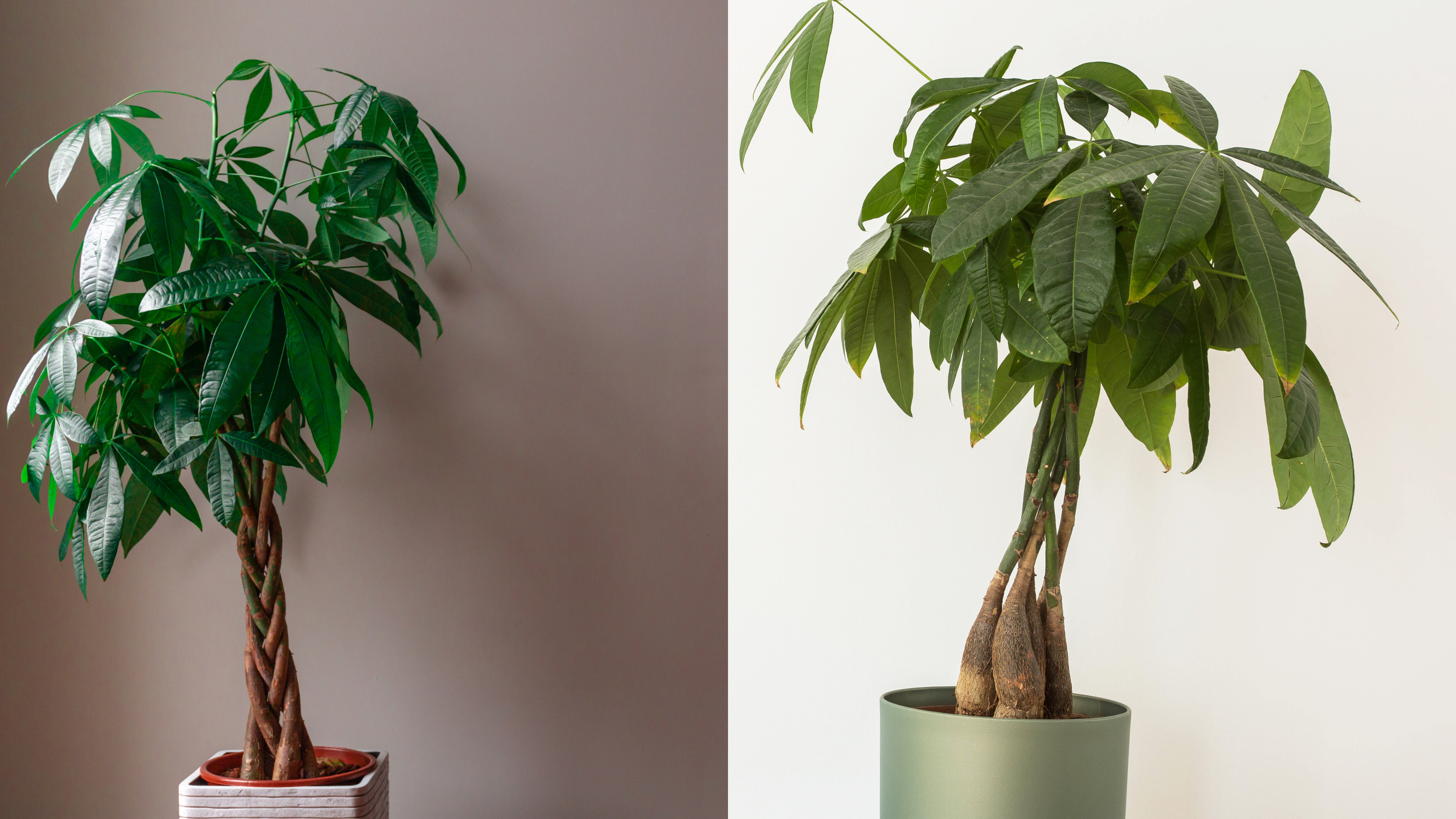
When handling any plant, but especially one that is synonymous with luck and prosperity, it is only natural that you want to cause it no harm. The Pachira aquatica, commonly known as the glorious money tree or Guiana chestnut, has a distinctive silhouette and foliage.
The finer details of money tree care should not be overlooked. There are many benefits to choosing this swamp tree that is native to Central and South America. It is a good-looking home addition that is both child and pet-safe. Not to mention, it will add some gusto to your air purifier. So long as you keep it happy and stress-free, yours might even be ripe for propagating more money trees and creating an enviable indoor jungle.
While its multiple braided trunks – which are typical of the money tree when kept as an indoor plant – are usually the talking point, knowing how do you repot a money tree is also a fine topic of conversation. When healthy, it can grow up to seven feet tall, so we asked the experts how to rehome this plant to sustain its growth and help it prosper in a verdant fashion.
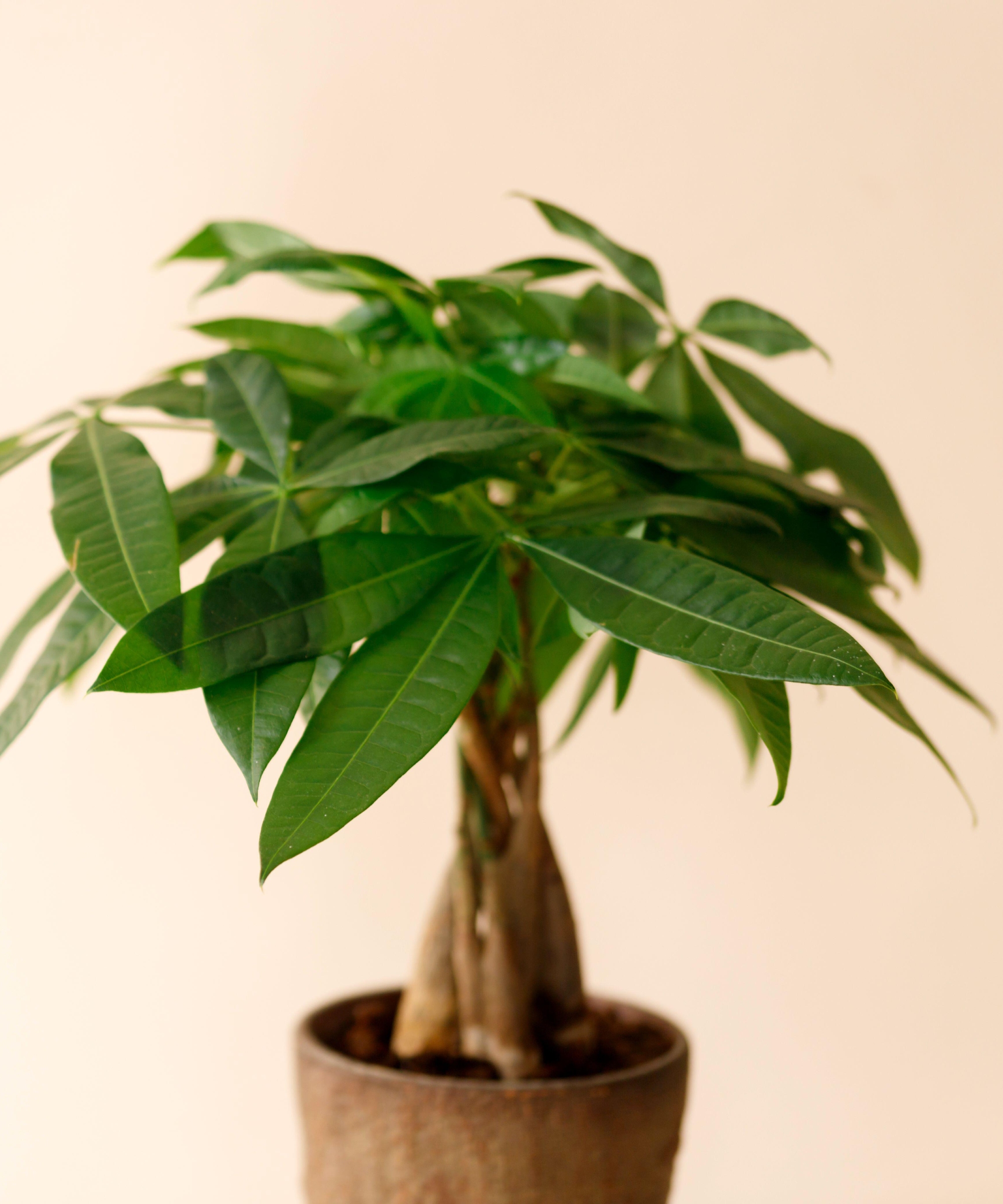
How to repot a money tree
Cracked pot, or slowed growth? According to green-thumbed experts, money trees typically need repotting every two years or so. However, you must make sure you do not repot this unique indoor tree prematurely.
'Money trees have shallow, slow-growing root systems so it’s ideal to allow them to outgrow their container first before upgrading them to a larger planter size,' says Paris Lalicata, head of plant education and community at The Sill. 'While they do not like to be pot-bound for a long period as it can inhibit its growth you do want to make sure the roots have fully outgrown the planter.'
Here is an expert-led checklist for success:
1. Make sure your timing is optimum
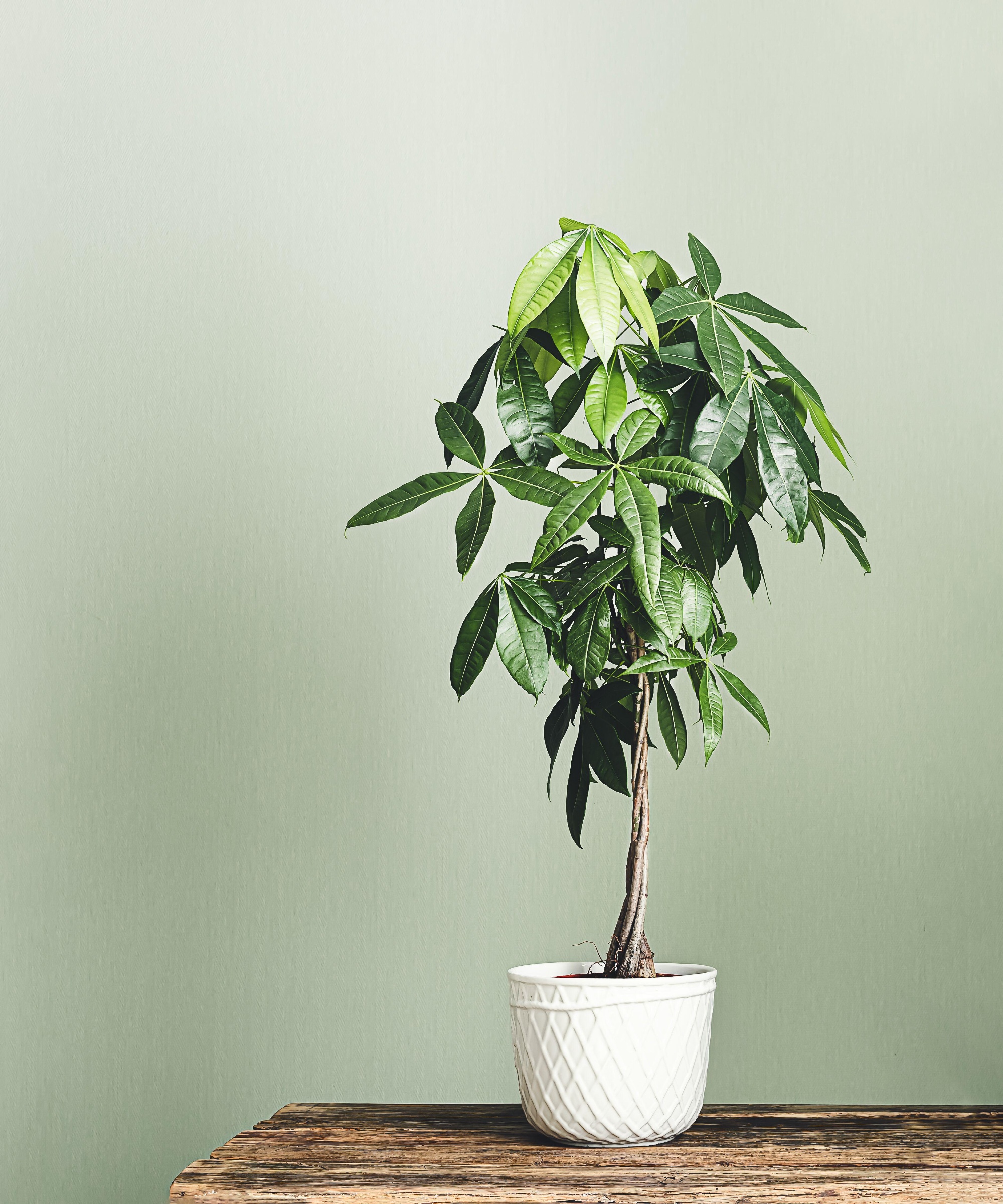
There are lots of benefits to repotting houseplants, but it is essentially quite a disruptive house move, so you only want to do it when it is necessary for the plant's health.
Diane Kuthy, founder of How To Grow Everything, reaffirms the importance of choosing the right moment. 'First, make sure that your money tree needs to be repotted.'
Incorrect watering, lack of sunlight, and common houseplant pests, can all contribute to the leaves of a money plant turning yellow. Diane notes this could also be an indicator that this favorite indoor tree could do with a new home too: 'Look for signs such as the roots popping out of the ground, yellowing leaves, stunted growth, or if it has been a few years since you've repotted your plant.'
This will typically be every 1-2 years but depends on your climate and the plant's home environment which will impact how fast it grows. To make the move easier on this plant, choose the right time of year too. As advised when pruning a money tree, spring or early summer is ideal as it coincides with the plant's natural growth cycle.
Some experts note that to make this even less disruptive, you can repot it just before its active growing period: 'You'll also want to wait until the early springtime to repot while your plant is still in a dormant stage so as to not add stress to the situation,' says Diane.
2. Choose the correct pot
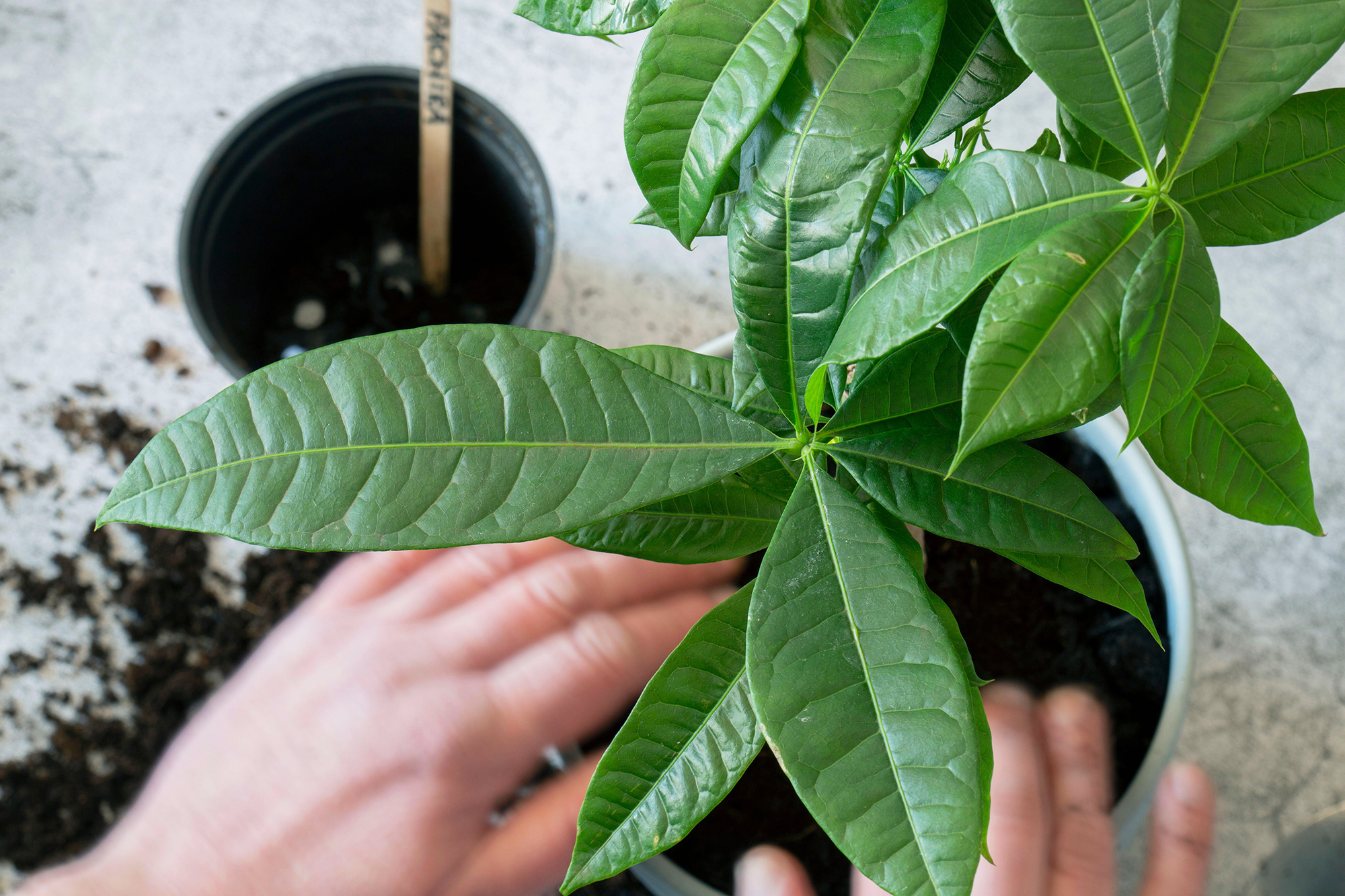
As with repotting all houseplants, it is important to size up gradually.
'When repotting a Money tree, you want to replant it into a container that is approximately 1-2 inches larger in container size,' says Paris Lalicata. For more mature plants, you can go bigger: 'If you’re working with a large money tree in a container that is already 10” in diameter or larger you can upgrade to a maximum of 2-3 inches larger in size.'
Overwatered plants can be susceptible to more damage than meets the eye, so you must select a pot with adequate drainage that will allow excess moisture to escape, and help avoid root rot.
3. Ensure the new soil is free-draining
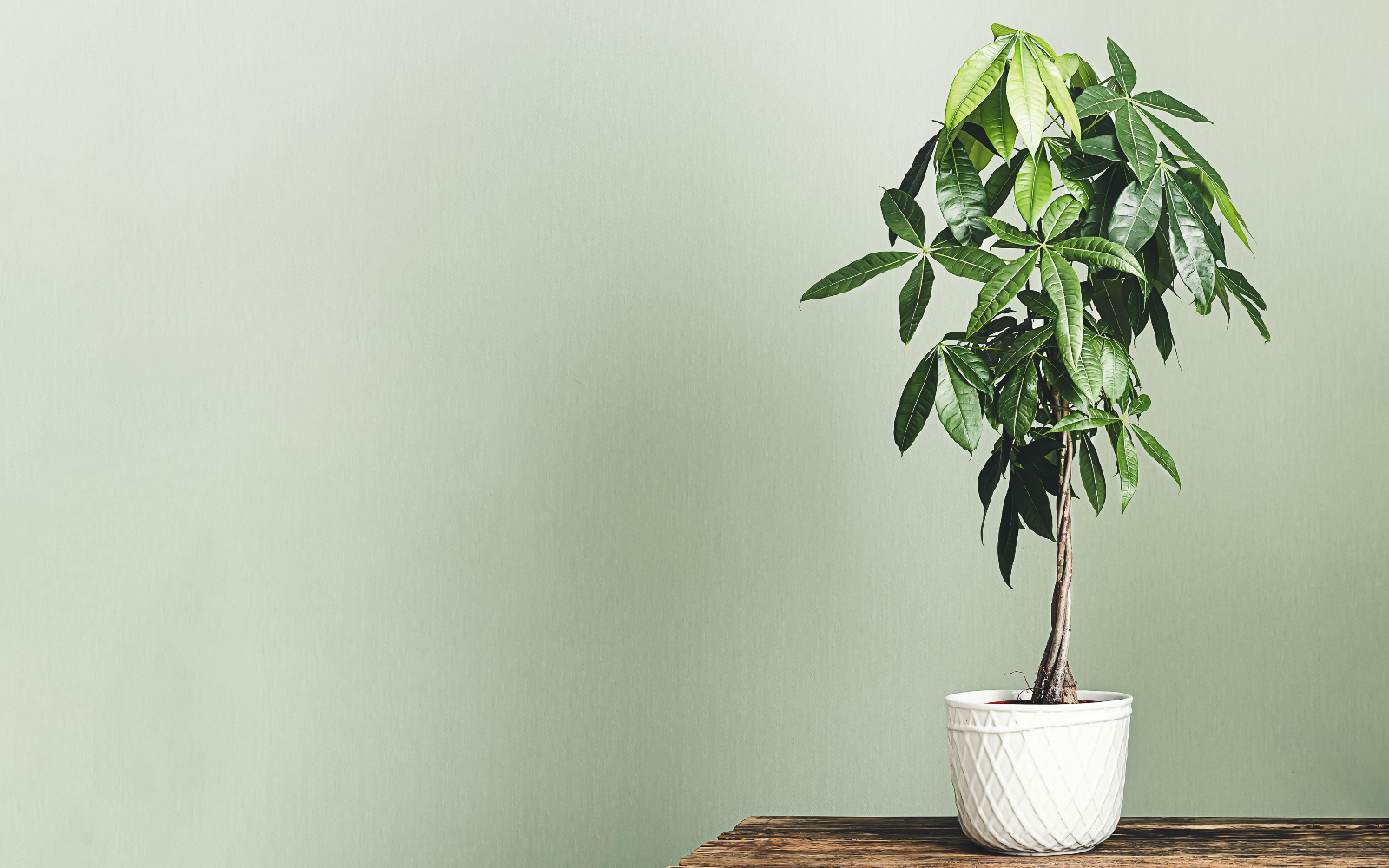
For the soil itself, this should be rich in nutrients and well-draining. You can purchase potting mix for houseplants, or make your own using a few key components. 'The potting mix should have ample drainage, but also contain high levels of organic matter to retain moisture,' says Jessica Mercer of Plant Addicts who kindly shares a homemade potting mix for money trees:
'You can make your own mix by combining 1 part compost with 1 part coco peat and 1 part perlite or horticultural sand.' You can find coco peat bricks such as these by Grow Oraniks Store on Amazon. Keen indoor gardeners might want to invest in a bulk perlite order from Amazon, too.
Keep gardening gloves to hand if you prefer. Then you will want a clean pair of secateurs or plant shears if you plan to prune roots. These pruning shears from the Tabor Tools store on Amazon are well rated for trimming delicate flowers, and herbs.
4. Prepare the new pot and gently transplant the money tree

With your soil and all the necessary materials to hand, it is time to prepare the pot and transplant the money tree. Begin by taking your clean new pot and adding a layer of the fresh soil. This should be no more than a third of the pot. From here, gently dislodge the money tree from its existing home. A firm grip around the trunk and gentle tug should do it. If the roots are attached to the pot, you might need to use a slightly sharper tool to help. Take care in doing so.
Inspect the root ball in case it needs trimming or slightly teasing apart: 'Examine the roots and trim any mushy or dark-colored roots,' says Jessica Mercer. 'You can also use your fingers to carefully untangle the roots if the plant is rootbound.' Skip this step if everything looks adequately happy and healthy.
'Set the plant in the new pot so the top of the root ball is 1-2 inches lower than the top edge of the pot,' continues Jessica. Keep it central, and then secure the money tree by filling in the gaps around the root ball. No roots should be visible at this stage, but be careful to not overfill the pot as this might cause damage to the plant, and your floors as Paris explains: 'Do not pack down the soil too hard which can inhibit oxygen from reaching the roots- you only want to pack until you feel some resistance,'
'Also be sure to leave the top inch of the planter empty without soil so that you can easily water your plants without water or soil spilling onto your furniture.'
5. Water adequately and reposition
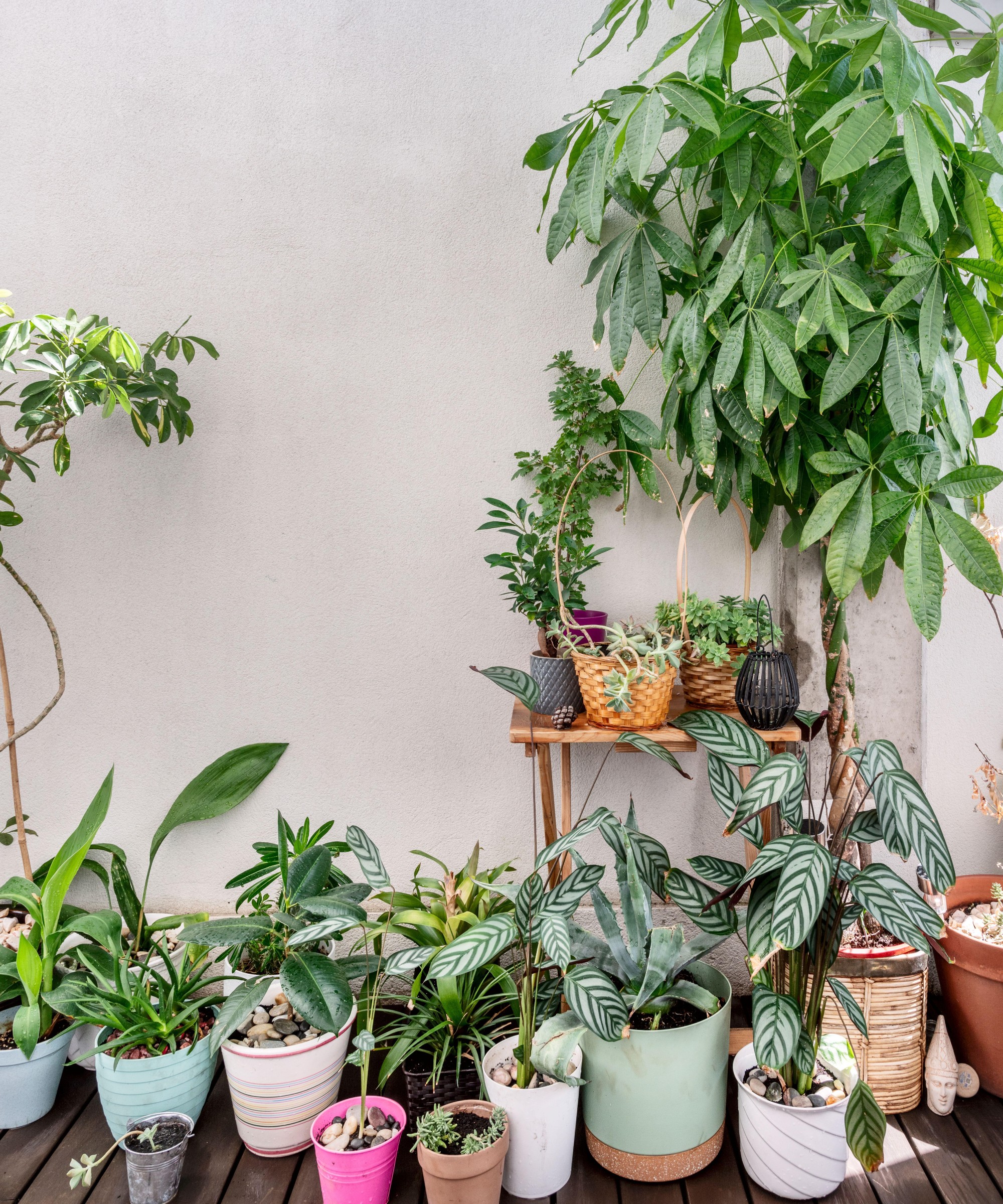
With this tall indoor plant in its new pot, it is important you hydrate it: 'Water the newly potted money tree well, targeting and fully saturating the soil,' says Jessica. 'Let the excess water drain from the bottom of the pot.'
Then, be sure to return it to its perfect location. Money trees thrive off bright, indirect sunlight, and should be regularly turned too. A money tree should also be kept at around 65-80°F, otherwise it can be susceptible to temperature stress which can cause your money tree to lose leaves.
With the upheaval of repotting a money tree, Diane Kuthy reminds us to check in on how it is getting on in its new pot. 'Water thoroughly and watch for signs of stress over the coming days. If your plant starts losing leaves or seems to be stressed, I like to apply a diluted fish emulsion fertilizer at half-strength to help.'
The Indian River Organics hydrolyzed fish fertilizer for plants, available on Amazon is plentiful of amino acids and micro nutrients. Make sure you do not use more than indicated, and be sure to know how often you should water a money tree going forward also.
Shop essential repotting materials

This all-natural fish fertilizer is packed with amino acids and micro nutrients.

Coco coir is the organic growing medium made from 100% natural and sustainable coir fibre, harvested from coconut outer shells.
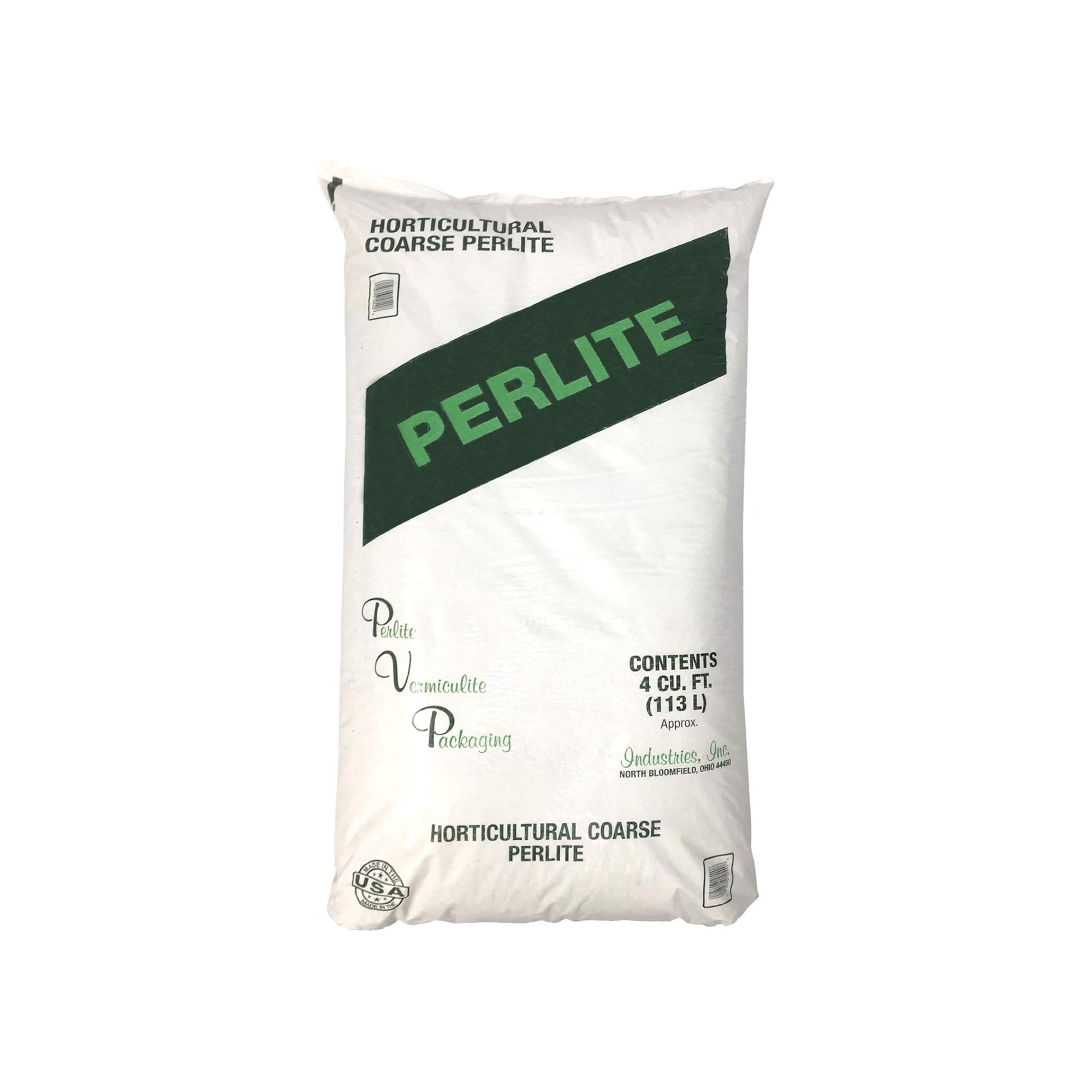
When perlite is mixed with organic compost, natural soils or composted bark, it helps anchor the roots of young plants so they grow stronger.
FAQs
What happens if you repot a money tree too soon?
Repotting a money tree prematurely may stress the plant for a variety of reasons so it really is important to assess its growth before you take on this task. 'Repotting a money tree prematurely or potting it into a container that is too large can lead to moisture-stress issues due to the higher volume of soil that is surrounding a small root ball,' explains Paris Lalicata, head of plant education and community at The Sill.
'When this happens, soil tends to remain moist for longer which could lead to overwatering symptoms. The timeframe of when you’d need to repot your money tree is completely dependent on its environmental conditions and how fast they grow in the home. Generally, you should check in on your plant every 12-18 months to see if it’s ready for a new home. Unless your money tree happens to be growing exponentially then I’d check on it 8-12 months after the initial potting,' she says.
Alongside, rubber plants and kentia palms, money trees make great office plants, and bathroom additions. Repot your money tree when it needs it and yours will reward you with beautiful glossy foliage and interesting detail.







